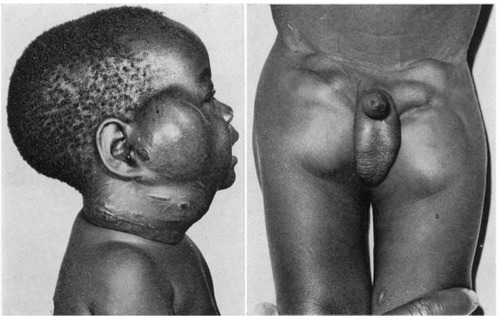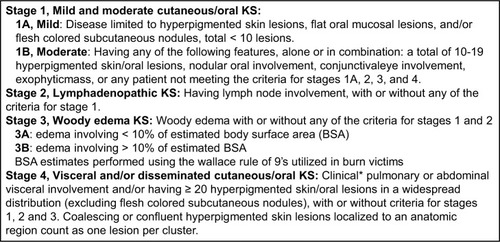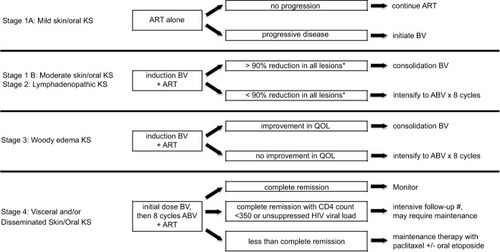Figures & data
Figure 1 Photographic representations of lymphadenopathic Kaposi sarcoma.

Table 1 Comparison of clinical features among pediatric KS cohorts in Africa
Table 2 Comparison of treatment outcomes among pediatric KS cohorts in Africa
Figure 2 The modified Lilongwe pediatric Kaposi sarcoma staging classification.
Abbreviation: KS, Kaposi sarcoma.

Figure 3 Treatment design schema for a risk-stratified and response-adapted therapeutic approach to pediatric Kaposi sarcoma.
Abbreviations: KS, Kaposi sarcoma; ART, antiretroviral therapy; progressive disease is defined as an increase in the size of existing lesions or the appearance of new lesions; BV, = bleomycin and vincristine; induction BV includes four cycles of BV given every 2 weeks, consolidation BV includes four cycles of BV given every 4 weeks; ABV, doxorubicin, bleomycin, and vincristine, QoL, quality-of-life; complete remission is defined as no clinical evidence of KS lesions; HIV, human immunodeficiency virus.

